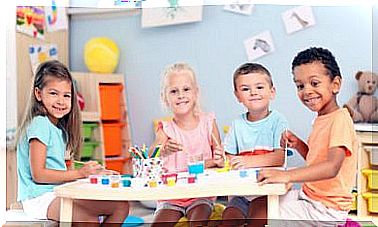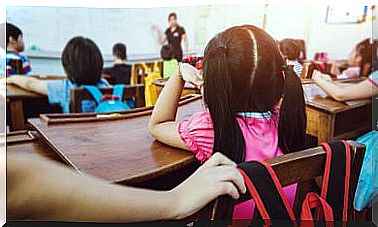The Cognitive Biases Of Adolescence

Adolescence is a complex stage, one of great changes at all levels. The physical, intellectual, social and emotional development of minors reaches some great milestones. However, if we do not have information about the processes of this stage, we can perceive adolescents as incomprehensible beings. So that this does not happen, today we will talk about the adolescent thinking style and its cognitive biases.
Upon reaching puberty, children begin to think, feel, and behave very differently than they have been doing. Many parents watch in amazement as their loving and obedient child suddenly becomes stubborn and independent. However, it is a normal transition that, if we can understand it, will allow us to accompany our children without fear during this phase.
Adolescent egocentricity
With the arrival of adolescence, minors reach the stage of formal operations, postulated by Piaget. This implies greater cognitive development, with adolescents being able to use abstract reasoning. As well as building hypotheses and deducing consequences. However, this stage is also accompanied by the so-called adolescent egocentricity.

This is based on a confusion between the elements of internal thought and external reality. Thus, young people can maintain excessive confidence in their own ideas, without there being any concrete facts to support them. This intellectual egocentricity gives rise to various cognitive biases, leading to distorted beliefs.
The cognitive biases of adolescence
Imaginary audience
Adolescents have an exaggerated self-awareness. They spend most of their time thinking about themselves and assume that others do the same: always be aware of them. This is why they usually feel that they are the center of all eyes, that at every moment others are observing and judging them.
An example of this phenomenon would be the adolescent who goes to a meeting with her friends, completely anguished because she has not managed to hide a grain with her makeup sufficiently. Her elevated discomfort stems from the thought that everyone present will be noticing that imperfection, as much as she does.
This effect is called imaginary hearing because all that external attention only exists in the adolescent’s mind. Probably, each young person in the room is aware of their own concerns and does not even notice this matter that worries our protagonist so much.
However, this feeling of being constantly evaluated generates high pressure on minors, and leads them to act in inappropriate ways, with the aim of gaining acceptance and social recognition.
Personal fable
It is very common to hear teenagers say that nobody understands them, that they feel misunderstood. This comes from the personal fable. Due to this thinking bias, the young person considers himself and the events that happen to him unique. You have the feeling that your personal experiences are truly special, that no one has ever been in the same situation before.

For this reason, for example, when faced with a sentimental breakup, the adolescent can affirm that no one understands the pain he feels, because no one has loved as much as he has. Because no one has lived a love like this before. Because their relationship was special and unique, and so was their suffering.
Fable of invincibility
By the very fact of feeling special and unique, they feel that nothing bad is going to happen to them. They believe that the rules do not go with them and that the dangers do not concern them. Thus, they venture to take unnecessary risks under the firm belief that they will never get pregnant, they will never have a traffic accident, or they will never develop a drug addiction.
Temporal cognitive biases
All these distorted beliefs are typical of the life stage that adolescents go through. As they develop their identity and accumulate experiences, these biases stop operating and their thinking becomes more in line with reality. However, it is important that the adults in the environment, especially the parents, are aware of the existence of these thought phenomena.
In this way, it will be easier to understand young people without judging or blaming them. On the contrary, we will be able to understand and guide them in a more loving and respectful way. At the end of the day, it is part of the process they are going through.










